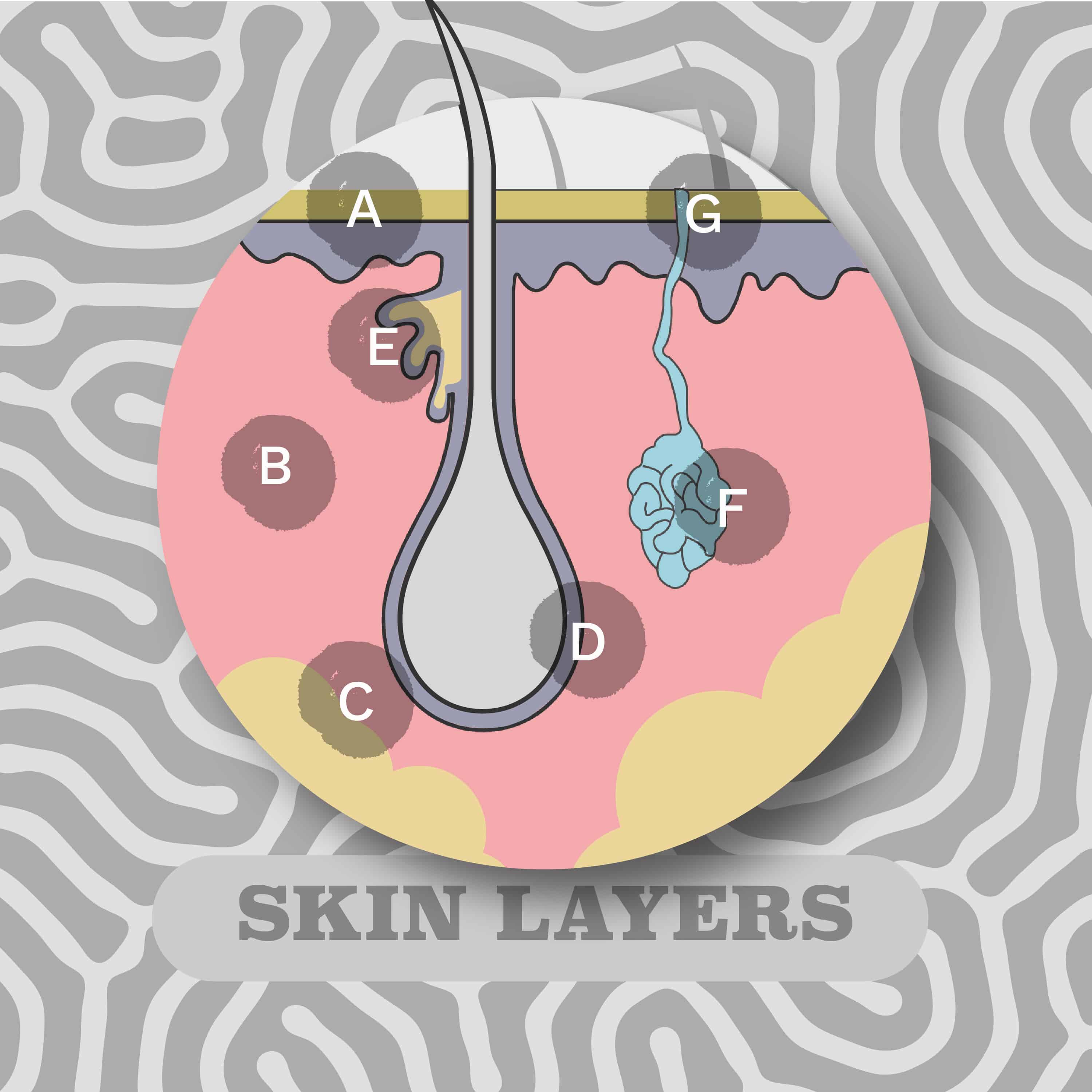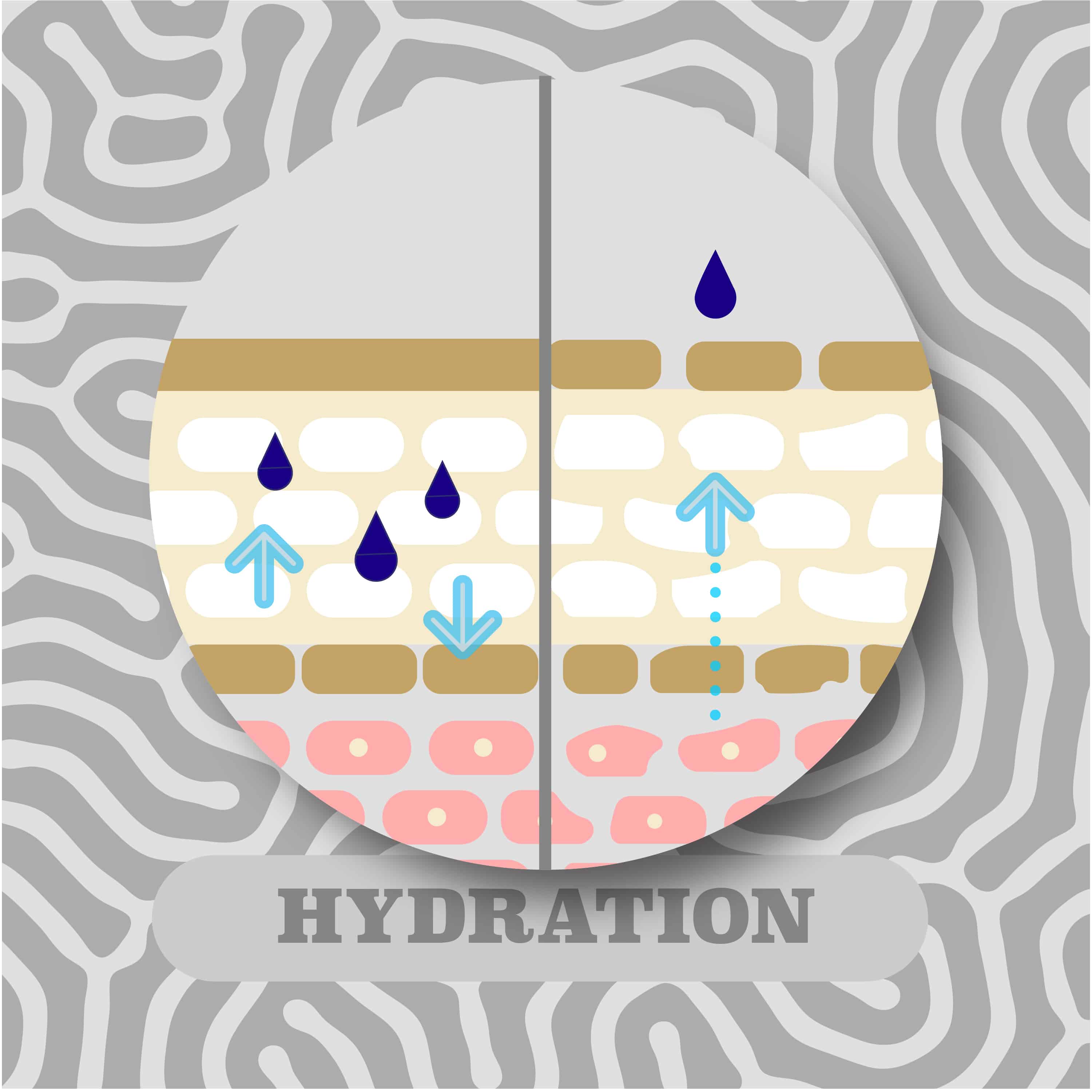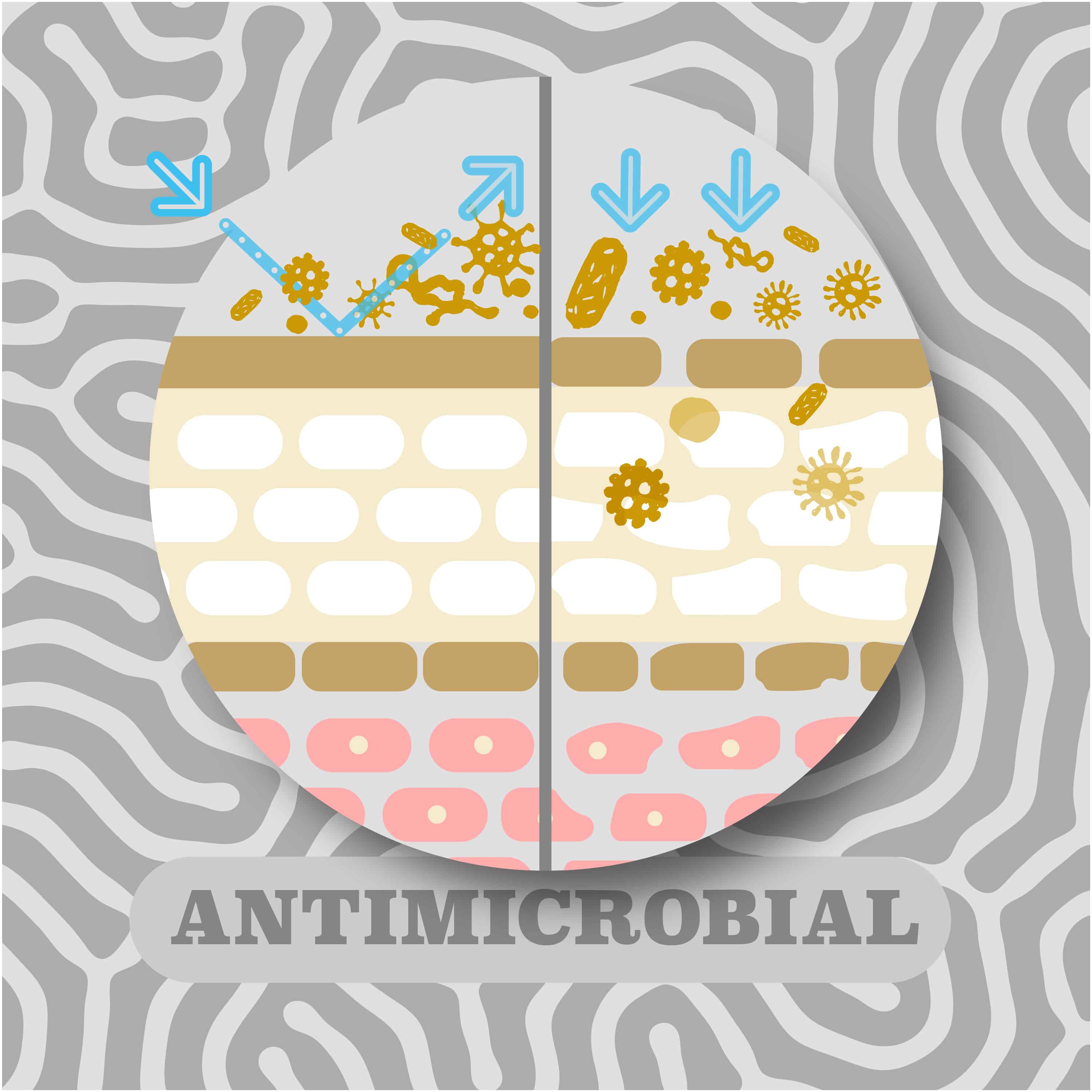Our new content series takes us back to the basics: what is the microbiome and what does this mean for our skin care routines?
Here, we start with the skin structure. What is it and where does the microbiome fit in?
Skin layers
 Our skin is made up of 3 basic layers. Each has an important role in human health:
Our skin is made up of 3 basic layers. Each has an important role in human health:
A) Epidermis – the outermost layer which acts as a protective, waterproof barrier and where most of our skin bacteria are found
B) Dermis – the middle layer beneath the epidermis which contains our hair follicles (D), our sebaceous (oil-producing) glands (E) as well as our sweat glands (F) which release sweat to the surface through sweat pores (G). This layer also provides sensations related to touch!
C) Subcutaneous tissue (fat) – this bottom layer protects our bones and muscles, helps maintain our body temperature, and acts as a passageway for nerves and blood vessels from the dermis to the muscles
Together, these layers help protect us from our external environment. Skin conditions occur when something external or internal disrupts this harmony.
Skin hydration
 The outermost layer of the skin, the epidermis, acts as a protective barrier. It serves multiple functions which are largely attributed to its top layer of cells; the stratum corneum (SC).
The outermost layer of the skin, the epidermis, acts as a protective barrier. It serves multiple functions which are largely attributed to its top layer of cells; the stratum corneum (SC).
These cells work collectively to maintain healthy skin, allowing for natural shedding and retaining a smooth texture, elasticity, and ability to respond to forces without rigidity or breakage. The SC layer is also where most of our skin bacteria can be found.
One of the SC’s key functions is keeping our skin hydrated. Moisturizers that we put on our skin impact the SC layer by binding water to it to improve surface hydration and prevent moisture evaporation. Water is crucial for microbial growth so hydrated skin keeps our healthy bacteria happy!
When the SC barrier is disrupted, water can leak out of the skin leading to dry skin and its associated problems. Sometimes, this barrier disruption is caused by changes to the skin microbiome. In atopic dermatitis (eczema), barrier disruption is associated with greater prevalence of the bacterium Staphylococcus aureus (though its exact role is unclear).
Antimicrobial barrier
 As well as keeping us hydrated, the top layer – the epidermis – is our first line of defense against infection. It protects us in 2 key ways:
As well as keeping us hydrated, the top layer – the epidermis – is our first line of defense against infection. It protects us in 2 key ways:
- Acting as an antimicrobial barrier, protecting against harmful microorganisms and other foreign bodies, blocking them from entering the body
- Encouraging our own immune responses (innate and adaptive) to recognize harmful microorganisms and other foreign bodies
While we often focus on the effect of external factors on the skin microbiome it also has an important relationship with our own immune system, with each helping shape the other.
In fact, research is increasingly showing that disturbances to our microbiome disrupts the natural activities of our immune responses, in some cases enabling disease, and this applies to the skin. These findings challenge the previous perception that simply 1 pathogen = 1 disease.
Want to explore more of the body? We wrote about the human microbiome last month and the unique makeup of microbes that each of us has on our bodies. You can also see each part in more detail on our Instagram page.
